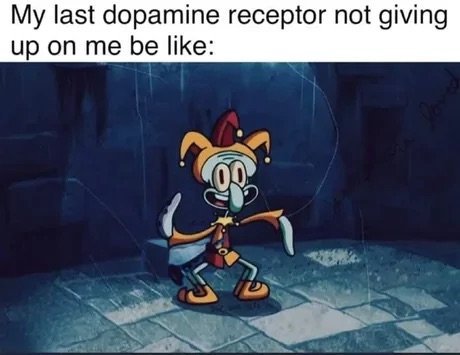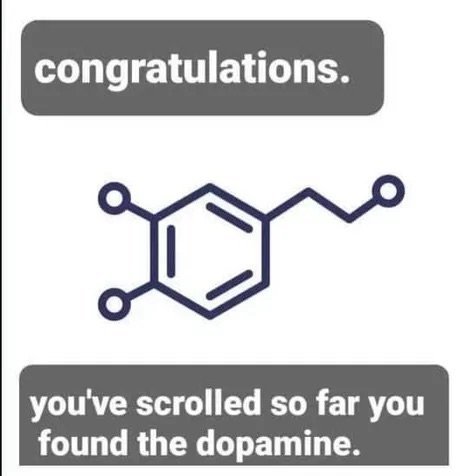Dopamine Addiction
(Luther’s thoughts)
I recently just finished reading a book called Dopamine Nation; Finding Balance in the Age of Indulgence by Anna Lembke, MD.
I like many others, am addicted to dopamine. I have a few addictions.
One of my biggest ones is social media. Another one is weed. What I
find so hard about it is that it’s easy and accessible. I can go on my
phone to check a text before a nap and all of a sudden I am scrolling
Instagram and it’s been two hours. This is something I struggle a lot
with. It’s hard because social media is a big part of my job, so I
rationalize my behavior by saying I’m “doing research” or looking for
ideas.
This week's reading might be a little different. I want to share a few
passages from the book I read that highlights addiction and frames it
for what it is, our attempt to escape from pain and discomfort.
“Dopamine Nation: Finding Balance in the Age of Indulgence”
-by Anna Lembke, MD
(Edited / shortened for our reading. Check out the book below)
Link to Dopamine Nation on World Of Books
“Prior to the 1900s, doctors believed some degree of pain was healthy Leading surgeons in the 1800s were reluctant to adopt general anesthesia during surgery…
The famous seventh-century physician Thomas Sydenham said this
about pain: ‘I look upon every…effort calculated totally to subdue
that pain and inflammation dangerous in the extreme… for certainty a
moderate degree of pain and inflammation in the extremities are the
instruments which nature makes use of for the wisest purposes.’
By contrast, doctors today are expected to eliminate all pain
lest they fail in their role as compassionate healers. Pain in any
form is considered dangerous, not just because it hurts but also
because it is thought to kindle the brain for future pain by leaving
neurological wounds that never heal.
The paradigm shift around pain has translated into massive
prescribing of feel-good pills” (Lembke 38).
“Beyond extreme examples of running from pain, we’ve lost the ability
to tolerate even minor forms of discomfort. We’re constantly seeking
to distract ourselves from the present moment, to be entertained…
We’re all running from pain. Some of us take pills. Some of us
couch-surf while binge-watching Netflix. Some of us read romance
novels. We’ll do almost anything to distract ourselves from ourselves.
Yet all this trying to insulate ourselves from pain seems only to have
made our pain worse” Lembke 40-44).
The book continues on to explain this phenomenon by framing dopamine and our brain in a picture of a pleasure-pain scale.
“We’ve all experienced craving in the aftermath of pleasure. Whether
it’s reaching for a second potato chip or clinking the link for
another round of video games, it’s natural to want to re-create those
good feelings or try not to let them fade away. The simple solution is
to keep eatin, or playing, or watching, or reading. But there’s a
problem with that.
With repeated exposure to the same or similar pleasure stimulus,
the initial deviation to the side of pleasure gets weather and shorter
and the after-response to the side of pain gets stronger and longer, a
process scientists call neuroadaptation. That is, with repetition…we
need more and more of our drug of choice to get the same effect.
Needing more of a substance to feel pleasure or experiencing less
pleasure at a given dose, is called tolerance. Tolerance is an
important factor in the development of addiction” (Lembke 53).
At the end of the book, it summarizes the key points into “Lessons of
the Balance” I will list a few of them here.
● The relentless pursuit of pleasure (and avoidance of pain) leads
to pain
● Recovery begins with abstinence
● Abstinence resets the brain’s reward pathway and with it our
capacity to take joy in simpler pleasures.
● Self-binding creates literal and metacognitive space between
desire and consumption, a modern necessity in our dopamine-overloaded world. [Self-binding is when a person makes
it difficult and puts barriers up to stop themselves from doing
something they don’t want to do. Example delete social media]
● Pressing on the pain side (of the scale) resets our balance to
the pleasure side
● Beware of getting addicted to pain
● Radical honesty promotes awareness, enhances intimacy and fosters
a plenty mindset
● Instead of running away from the world, we can find escape by
immersing ourselves in it.
There is a lot more in this book I couldn’t cover, but I think the main takeaways are clear. Addiction is not easy, especially when we are in a world that is set up in a way for easy access to our drugs of choice. It’s not simply a matter of personal will, but there are things we can do. Observe and be conscious of our behaviors and when we are shying away from not just pain, but discomfort. Be honest with yourself and those around you when seeking support. And finally, try to embrace the world around us, facing the pain head-on.
( PS I wanted to make a little disclaimer. Everyone’s needs are
different and some may be dealing with chronic health issues. This is
not medical advice or an attempt to shame anyone. Only you know what’s best for you. Peace and love <3 )
Thought/ Journal Topics:
Do you have an addiction or habit you want to change? If so, what?
What are some things you can do to help reduce temptation?
Have you told anyone the full extent of this habit or addiction?
Do you think you are able to have a healthy relationship with it,
or is this something where moderation doesn’t seem to work?
What are some addictions or habits you have overcome in the past?
How did you do it?
Reminisce on old habits you have overcome. How does that make you feel?







